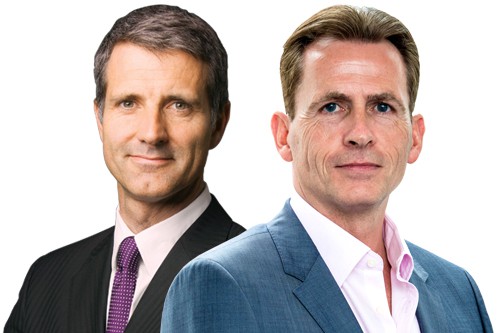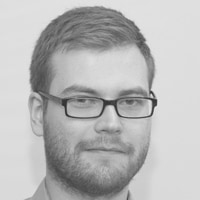
This year has proven to be crucial in shaping the models of many major pharma companies. Of course, the biggest development so far in 2014 is the one that never was – Pfizer’s pursuit of AstraZeneca, which has, for now, drawn to an unsuccessful close after a tense month of negotiations.
But for the likes of GSK, Novartis and Lilly with their asset swap agreement, Forest Laboratories and its acquisition of Actavis, and the various dealings at Merck & Co, BMS, Ranbaxy and more, new agreements have meant big changes in each company’s structure and priorities.
One company that wants to stand firm amid such debate is Botox maker Allergan, which has become the latest target for Canada-based Valeant, which has made a string of acquisitions as part of an attempt to join the ranks of the top five global pharma companies.
In the latest development, Valeant has turned to hostile takeover methods after being rebuffed several times by Allergan, who has questioned the business model of its potential buyer, although the final outcome of negotiations remains uncertain.
The interest in Allergan is understandable; it is one of the few pharma companies still to be reporting double-digit sales growth and it has done so throughout the wider economic downturn of the past several years.
Just last year the company achieved product net sales of $6bn, divided mainly between its three core areas of ophthalmology, medical aesthetics and Botox, which has numerous indications in both cosmetic and medical uses.
A customer focus
In May, ahead of Valeant’s most recent offer, I spoke to two of Allergan’s most senior figures outside the US: Paul Navarre, president of its operations in Europe, Africa and Middle East (EAME), and Paul Boland, who explained the company’s internal operations as VP, human resources, for the region.
“We have an exciting momentum,” says Navarre, who joined Allergan in 2007 and has been in his current role for just under a year following senior positions in the company’s neuroscience and ophthalmology divisions and a spell as general manager in France.
“We are focused in a few areas where we are either leaders or number two in that segment,” he says, explaining why Allergan has avoided the flat growth or declines of larger rivals. “We also have a business efficiency in that we have a small, concentrated sales force.”
Not only is Allergan’s approach to sales more efficient, according to Navarre, it is also one that is focused on the needs of the customer. “We try to be connected. We know the payers well and we are able to identify their profound needs – we even try to pre-empt them in fact. Then because we are focused in those areas, we have people who know how to find solutions to our customers’ unmet needs.”
This approach makes it easier when it comes to the reimbursement stage of drug development, which has proven to be a cause of concern for many companies who struggle to gain access for their products.
“We have a true innovation strategy,” says Navarre. “We don’t like developing ‘me-too’ drugs. It doesn’t work like that anymore. Our innovations are true innovations.”
“Our CEO David Pyott, who joined from Novartis in 1998 and has been at core of Allergan’s success, said to me once that his job is very simple; he meets customers, he meets doctors, he meets payers and he listens to what they need. Then he tells our research department what the customer wants.”
Doing things differently
Having been at the company since 1994, Navarre’s colleague Paul Boland certainly has the experience to understand how Allergan has developed towards this customer-focused approached and how it has led to real success.
The kind of behaviour I look for in our commercial team is to help to facilitate the payers to meet their objectives
It’s not just longevity that serves as Boland’s authority on the company though, it’s variety too. In those 20 years Boland has served in a variety of commercial roles, including managing director of the medical aesthetics business in the EAME region, managing director of neurosciences and VP, commercial operations, giving him a breadth of first-hand knowledge few other HR heads have.
The company hasn’t remained still in those 20 years: “At Allergan we’re constantly innovating, and almost reinventing ourselves through the years,” says Boland, explaining that the company was founded on an eyedrop product also called Allergan, and has since expanded its business in specialty areas while spinning out other businesses, such as its medical optics division.
“We are always trying to forge ahead and do something different to better address the needs of our physician and payer customers rather than maintaining the status quo.”
These wider business developments influence how the company recruits externally and how it develops its employee skill set internally, instilling that customer-focused mindset encouraged by CEO Pyott.
“For any particular role that somebody would like to do, we look at the knowledge needed for the role, we look at the experiences the individual has that makes them suitable for the role, and then we look at what they’ve actually done in terms of their overall performance
“Finally, we assess the persons competencies, which are exhibited by their behaviour. Somebody who has a very customer-focused mindset is usually collaborative and innovative as well.”
Concurring with Navarre’s take on market access, Boland explains that employees need to reflect Allergan’s view that payers are not blockers for a product coming to market place, but instead are “facilitators” in the process.
“The kind of approach I look for from our commercial team, particularly those marketers whose responsibilities will include talking about pricing and reimbursement, is to help facilitate the payers to meet their objectives, as opposed to thinking: ‘There’s another barrier to get the product on to the marketplace.’
“And I think we’ve been very successful with the launch of products we’ve had over the last few years,” adds Boland. “And this success has come because we have talented individuals who listen to the customer and try to really understand what they’re looking for and then offer solutions to help address these needs.”
Leading the field
That success looks set to continue, with Navarre reeling off a list of new approvals and launches expected this year, including a new indication for Botox in adult spasticity associated with stroke and for the ophthalmology treatment Ozurdex in diabetic macular oedema.
For Navarre, each new indication marks not just an important new step for the product, but for the therapy areas they cover.
“To some extent we are quite like Apple,” he says regarding Allergan’s approach to innovation. “That’s because we are the leaders in the categories we work in, and so we need to confront the need for innovation. We need to be a step ahead.”
And sometimes such an innovative approach can mean the company has a whole therapy area to itself. “We were the first to investigate botulinum toxin for the treatment of chronic migraine, a debilitating condition where patients experience 15 or more headache days per month of which at least 8 are migraines. It took us 15 years, but we are now the only company working to help patients with this condition.”
This lack of previous therapies also meant knowledge of the conditions was low among healthcare professionals, increasing the need for effective collaboration with doctors. “We really like physician education. If you think about chronic migraine, the market did not exist [before Botox was approved in 2010]. There was no real therapy to pre-empt it in chronic migraine and limited physician education about the disease. But we believe in medical education and we take it very seriously. This year alone we will be running medical education programs involving more than 45,000 physicians.”
More than Botox
As can be seen with these indications, Botox is far more than a solution to treat wrinkles, and Allergan is far more than the company that just makes Botox, despite the drug’s incredible success.
In addition to migraine and adult spasticity, its approved indications include overactive bladder, muscle stiffness in elbow, wrist and fingers, muscle problems in the eye, crow’s feet lines and severe underarm sweating to name a few.
Both Navarre and Boland agree it’s a drug the company is very proud of, but it is definitely not the only aspect of its business.
“Our core business is ophthalmology,” says Navarre. “Globally, 47 per cent of our sales are in ophthalmology. Botox for cosmetic use is about 15 per cent of Allergan sales, so it’s quite small. And its use in medical indications is around 17 per cent.”
Building diversity
As well as innovative products, another contributing factor to Allergan’s growth is increasing its presence in key emerging markets, such as Russia, Turkey and the Middle East.
Boland, who has worked in a number of different regions for Allergan, describes the challenge of creating an Allergan culture that crosses borders.
“My experience working in other countries and within the European environment over the last ten years has sensitised me to the fact that we want to make sure that whatever we do in the countries is going to be impactful. I don’t ever think about what’s good for England would be good for everybody else.
“Having said our company values are what makes us Allergan; when I go into the Allergan Italian office, I see the same approach to our business, our customers and their patients with the wonderful cultural aspects of being in Italy.”
Allergan’s own culture is one that embraces diversity in its workforce, says Boland. “I’m delighted to say that 45 per cent of our country managers are female,” says Boland. “And close to 40 per cent of our director level and above positions are currently held by women.
“We also look for diversity in our regional offices. We’re working in Turkey and Russia, Poland, South Africa, Eastern Europe, so we need to make sure we have the right knowledge about these markets.”
The future
No pharma company’s future is certain, and Allergan’s is certainly a source of big debate at the moment thanks to Valeant’s advances.
In any case, Navarre expects the company to continue its fast-paced growth over the next few years. “We have ambitious growth plans,” he says. “But we want to remain nimble and stick to our customer-focused philosophy.
“The enemy is bureaucracy, and the enemy is slowing down your business when you get bigger. There is a worry that when a company covers larger regions or more countries, it slows them down and pushes the decision makers further away from the customers.”
If bureaucracy is the enemy, then a strong ally for growth is an effective, well-trained and motivated staff.
“I saw HR described once as the glue in an organisation,” says Boland. “But that to me is such a static term. I would like to think in Allergan we’re more the lubricant of a well-oiled machine that’s moving constantly, changing constantly, and we have to adapt and have that flexibility.
“And so I see the HR function as being absolutely integral in ensuring we get the right people in the right roles at the right time to do all of these things.”





